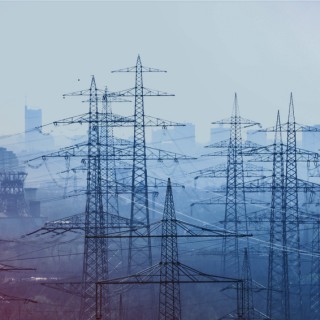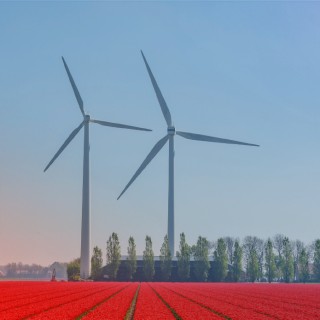EU Recovery Fund: 3 things Poland needs to do for the mechanism to bring real change
Insights
The National Recovery Plans are built on credit. The investments we design today must serve future generations—our children—because we all will be paying it back until 2057. It is based on concrete reforms, changes that need to happen in order to achieve the intended objectives. The consultations on the recovery plan in Poland is now coming to an end. How should we change it so that the money pays off in the future? In this opinion, I refer to the Green Energy and Energy Efficiency Component.

Background
The EU Recovery Fund is a completely non-standard action within EU funding. It is an additional momentum boost for Member States to help EU economies recover from the pandemic. It must also be effective in tackling the climate and environmental crises. The plan is also intended to increase the European Union's competitive edge over the rest of the world by building on clean technologies, digitalisation, and resource efficiency. Investments should be completed by 2026.
It is the responsibility of each Member State to prepare a National Recovery Plan (NRP). The plans must be submitted in April. The European Commission is reviewing these plans, and they will be approved by the European Council. Poland may have at its disposal EUR 23bn in grants and EUR 34bn in loans for the implementation of the NERP. This huge amount of funds can be used effectively or wasted.
Scope and priorities
The National Recovery Plan prepared by the Polish government defines five priorities:
- Productivity of the economy and jobs,
- Low-carbon transformation,
- Adaptation to climate change,
- Digitalisation and the digital economy,
- Higher quality of health services,
- Sustainable transport.
The priorities concerning energy, climate, and mobility are correctly defined, and the listed measures are part of the solution to Poland’s key challenges. The distribution of funds is open to discussion, but here it is necessary to assess not only the importance of each priority, but above all the possibility of carrying out reforms in a short period of time and the implementation of key projects.
-
Monitoring, cross-sectoral agreement
It is necessary to set up a Forum for Generations, a team to monitor the implementation of the NRP. Such a team should build trust in the process, support the development of solutions, and control the objectives and communication of the programme. It should consist of representatives of various interests: government administration, scientists, social organisations, regions, towns and villages, business, and the European Commission. The group should not be too numerous, but effective and have real competences. Public hearings on the NRP carried out by the National Federation of Polish NGOs, are a good start for cooperation.
-
Governance
It is necessary to strengthen the NRP implementation structures, ensuring transparency and smoothness of the process. The Recovery Plan is additional money that will be dumped on old administrative machinery. The idea of the NRP appeared—like the pandemic—unexpectedly. New tasks are being thrown onto substantive departments in ministries on an ad hoc basis, which raises big concerns about the efficiency of the implementation, communication, and transparency of the whole process. With an unrealistic assessment of the huge amount of work involved in managing this large stream of money, the risk of system inefficiencies or misuse of funds increases.
For the new wave of projects that are coming, we need not only local structures, such as local governments, which are close to the beneficiaries, but also we need to think about small funds dedicated to specific purposes and projects, e.g., for energy efficiency. We should also involve banks—it is surprising that Poland does not assume that it will include loans at all, focusing only on subsidies.
-
Reforms
The key to NRP funding is to propose reforms that will support change. Outlining reforms is currently the weakest element of the Polish government, which is reflected in the institutional weakness of the country in planning the energy transition. For reforms to be effective, they should be developed with stakeholders. With much pressure to act, it is important not to throw the baby out with the bathwater. The government should set up reform teams to refine the assumptions of the changes that need to be implemented within just a few months. The teams should consist not only of government officials but also experts and market participants.
Key elements of the reforms should include:
A) Creation of an Energy Transition Centre, an analytical base that will support central institutions and beneficiaries in planning for the energy transition, clean heat, cost assessments, market solutions, market potential, etc. The centre should address the topics of clean heat, electricity, and mobility—including hydrogen—and not, as envisaged in the NRP, only hydrogen. It should support the selection of optimal technologies, projects, and actions. Assuming that the functioning of such a centre could cost, for example, PLN 40 million over the implementation period, this is still not much compared to what Poland could gain by modernising its energy sector and effectively protecting the climate. At stake are several hundred billion zlotys and the risk of taking wrong decisions (as, for example, in the case of the Ostrołęka power plant block, where over 1 billion zlotys was wasted).
B) Reform of the Clean Air Programme (the main programme to overcome air pollution), which should be based on several main points:
- Decentralisation of the financing and implementation system of the Clean Heat Programme. NFOŚIGW should have a managing function, not an implementing function for small projects. It is necessary to create local technical support points where the Energy Transformation Centre will have a leading role. In some local authorities such solutions exist, but a systemic approach is lacking.
- Creating energy efficiency standards desirable from the perspective of climate neutrality goals.
- Creating a list of preferred technologies for heat generation in individual households and blocking public funding for the replacement of coal-fired boilers. Defining the role of electrification in individual heating, e.g., the number of heat pumps to be installed in subsequent years.
- Appoint certified energy auditors to check the quality of thermal modernisations and the replacement of heat sources.
- Reorganisation of the air-quality monitoring system and publication of annual reports on investments and emissions,
- Introduction of a ban on installing coal-fired boilers in new buildings from 2022.
C) Development of a strategy for the district heating sector to support Poland’s achievement of its climate neutrality goal by 2050. Set milestones for 2025, 2030, 2040, and 2050.
D) Reform of the modernisation of the electricity sector:
- Defining a path for renewables in 2025 and 2030 that meets the real needs of the power system;
- Revision of the distance law (10H rule) for onshore wind farms;
- Setting a timetable for energy market reform that ultimately increases its flexibility and improves the integration of variable sources.
Summary—the biggest challenges
The National Recovery Plan will not solve all of Poland’s economic and energy problems, but it can substantially help. Three things must be resolved: monitoring, governance, and reform.
Date of publication: 14 April 2021



